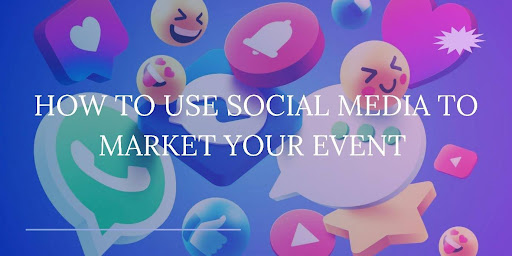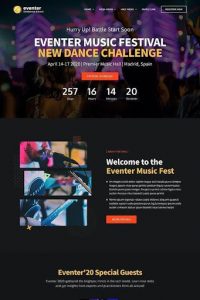The world has gone back to normalcy after the ups and downs of the COVID-19 pandemic. Events are springing up left, right, and center, varying from purely online events, to hybrid events and in-person events.
Regardless of the type of event that you are planning, social media offers one of the best and most cost-effective ways to market your gig. In this comprehensive guide, we will explore how to optimize your social media marketing efforts to promote your event.
But first, let’s go through a succinct overview of what event marketing entails across the board and not just social media.
Event Marketing Across the Board
The focus of this article is event marketing using social media. However, this is just one strategy to get your event out there. Besides social media, other strategies to explore include:
SEO Plus Content Marketing
Your event will be of no use if people can’t find it when they search on Google and other search engines. The way to go around this is to ensure that you use search engine optimization to its full advantage. That means that you can use strategies such as keyword optimization in the event title and your promo material.
To enhance the discoverability of your event on search engines, try to have a content strategy. Let’s assume that you are promoting a live social media event titled “How To Write Better Academic Papers as a College Student.” Quite naturally, this is an extensive topic that needs proper planning to execute. For your content marketing strategy, you may create blog posts such as How-To articles. You could even write a related blog post titled “The Right Way to Use an essay writing service“.
The content should be connected and linked together across your social media pages and your blog. Embed share buttons to your blog or website so that your audience can easily find you.
Also quite important is the judicious use of similar keywords across your entire web profile. You can use these keywords in content titles, descriptions, and even in comments. Use a strong CTA at the end of each article or resource. For example, you can include something like “Sign up for our exclusive student writing event”, leaving the reader with no ambiguity.
Have a Dedicated Event Page
An events page serves as a landing page or sales page. This is where users can sign up for your event, view the details of the event, and check out FAQs, dates, and any other important info. Your related content such as blog articles or social media promos of the event should all link back to the events page.
Email Marketing
Email marketing is one of the most effective methods of direct marketing. It even has a higher ROI than cold-calling or social media marketing.
Generally, cold marketing emails are sent in bulk using email automation tools such as Zapier and Klaviyo. Since your event may take weeks or even months to promote and get together, your emails should be sent from a drip automation tool.
Using an Event Marketing Platform
Event marketing platforms already have systems in place to help you reach out to a wider audience. Different platforms cater to different niches. For example, Banzai is an online platform that helps organizers increase brand awareness. Odoo is a platform that takes it a bit further. Your campaign can be integrated with your other email marketing tools, social media, and even text to send SMS messages.
Social Media Rules for Event Marketing
We’ve given a few suggestions on how to market your event comprehensively on the web. Let’s now move on to the main crux of the article, which is using social media for event marketing. Keep in mind that you should market your event on social media, before, during, and after the event. This is important to keep the momentum and the buzz alive.
Create a Facebook Event Page
With nearly 2 billion users, Facebook still provides one of the best ways to market any event despite its dimming popularity. You should create a Facebook Events page and add an in-person event. You can also invite guests, add event details, and even a cover photo. For example, if you are planning on running a fitness live event, you can interact live with your audience and share live training sessions.
Craft Conversational Hashtags
Move beyond conventional event hashtags and aim for conversational hashtags that spark engagement. Instead of a static phrase, create a unique, long-tail hashtag that encourages participants to share with you. Let them share their expectations, experiences, and thoughts about the event.
Share Live Content
Live content can be anything from hopping on Facebook Live, Insta Stories, Live Tweeting, or Snapchat’s Live Stories. There are a few different strategies to consider when going live, including:
- Sharing behind-the-scenes content with some special guests or attendees.
- Do giveaways live to audience members.
- Host trivia, Q&As, and FAQ sessions. Use gamification to your advantage.
- Interview attendees or FaceTime with special or mystery guests.
Provide Interactive Content Through AR and VR
AR and VR are just starting to gain popularity, although still not widely available. However, if the option to incorporate VR/AR content into your event exists, go for it. AR filters on Instagram and Snapchat when enabled will provide your attendees with a unique lens to view your event.
Post Highlights and BTS Content
Focus on sharing authentic and unscripted moments as part of your highlights either before or after the event. Behind-the-scenes content can include the raw stages of your journey including the event planning phase.
Incorporate participant perspectives as part of your highlights and provide a genuine preview of the event. For instance, for our example event “How To Write Better Academic Papers as a College Student”, you could ask participants to share their insights on how using a college essay writing service helped them to improve their writing.
FOMO
Fear of Missing Out is a powerful psychological phenomenon that makes one anxious at the thought of missing out on something important. You can make use of FOMO for your event, for example, by creating an event countdown on the different social media apps. As an example, Instagram allows you to create an event countdown sticker.
Micro-Influencers and Community Ambassadors
Ditch the traditional influencer model and tap into the power of micro-influencers and community ambassadors. Identify passionate individuals within your community who can authentically advocate for your event.
Wrapping Up
In this article, we’ve covered some general strategies for marketing your event across the entire web domain. Some of these include email marketing, SEO and content marketing, and creating an event landing page.
We’ve also dived deeper into strategies for event marketing across social media. Social media offers a ready audience, networks, and niche community for you to market your event faster. Social apps such as Instagram and Snapchat also provide useful tools to push your event further. These include events pages on Facebook and countdown stickers on Instagram.
With this comprehensive guide, you are now in a position to market and host a stellar event with excellent results. Good luck!

















